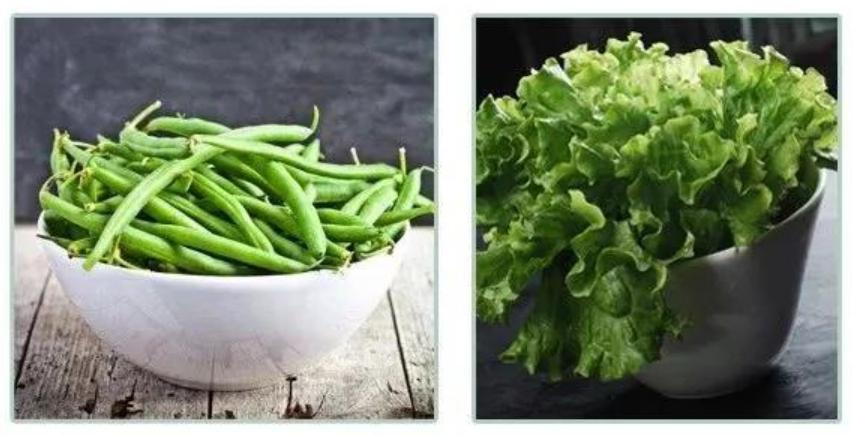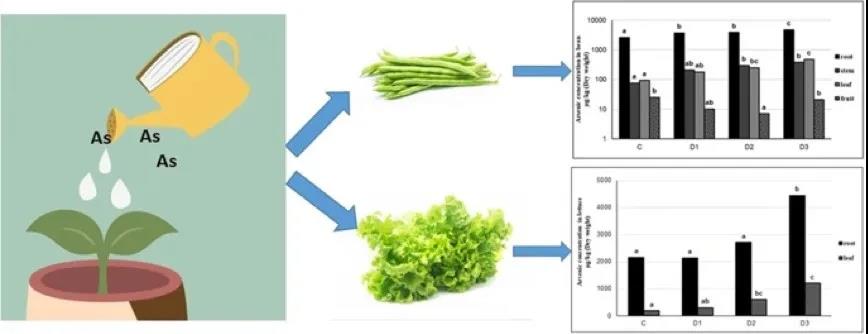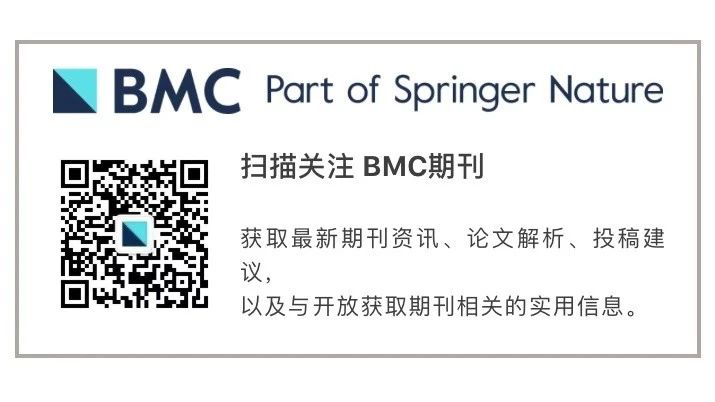含砷的地下水污染你的菜了吗? FPPN文献速递
论文标题:Effect of irrigation water containingarsenic on elemental composition of bean and lettuce plants cultivated incalcareous sandy soil
期刊:Food Production, Processing and Nutrition
作者:SiratSandil, PéterDobosyet al.
发表时间:2019/12/27
全球气候变化增加了干旱发生的频率和时间,也影响了粮食与农作物的生产。优化灌溉可成为解决问题的方案。但是,使用地下水灌溉存在一些安全隐患。随着工业化和城市化的推进,世界上多个国家的土壤和地下水受到砷污染,特别是中国、匈牙利、冰岛、墨西哥、阿根廷、巴西和美国等。据文献报道,中国土壤砷含量的背景值为9.2mg/kg,匈牙利的地下水中砷含量为0.02-0.1mg/L。
Food Production, Processing and Nutrition近期在线发表了匈牙利罗兰大学Gyula Záray教授课题组题为Effect of irrigation water containingarsenic on elemental composition of bean and lettuceplants cultivated in calcareous sandy soil的研究论文,讨论了含砷地下水对食用蔬菜的影响。

菜豆与生菜
砷在环境中以无机和有机两种形式存在,土壤和地下水中主要含有砷酸盐和亚砷酸盐。土壤中的砷来源分为自然源和人为源。自然源砷主要来自含砷的岩石。人为源是土壤砷污染的主要来源,包括灌溉、挖矿、燃烧和使用含砷的农药等。
砷是植物非必要元素。砷酸盐通过磷酸根转运通道吸收进入根系,亚砷酸盐通过水-甘油运输通道吸收。研究表明,低剂量的砷可通过抑制或杀死对作物有害的病菌的方式促进作物生长。但当砷的含量超过作物能承受的最大值时,可抑制作物生长,使其叶片萎蔫、卷曲等。砷可通过食物链进入人体,逐渐富集并危害人体健康。很多学者在研究中使用了高浓度的砷,但匈牙利地下水中的砷含量相对较低(0.02-0.1mg/L)。

本文的作者将菜豆和生菜种植在以钙质砂土为基质的可控温室盆栽里,使用浓度为0.1、0.25、0.5 mg/L的砷酸钠灌溉。作者研究了两种蔬菜的产量、不同部位砷含量和蔬菜中常量元素、微量元素的含量变化。结果表明,菜豆不同部位的砷含量从大到小依次为:根>茎>叶>豆,生菜不同部位的砷含量依次为根>叶。不同浓度的砷处理后,两种蔬菜都没表现出可见的中毒症状,常量元素和微量元素含量没有显著变化。砷从根转运到果实的转移因子在菜豆中为0.003-0.005,在生菜中为0.14-0.24。根据FAO-WHO推荐的每人每日容许摄入最大量2.1μg/ kg(体重),灌溉菜豆和生菜的水砷含量不应高于0.1mg/L。
摘要:
Background
The uptake ofarsenic by vegetables from soil irrigated with arsenic enriched groundwaterposes a major health hazard. The edible portion of these vegetables transferarsenic to the human beings. The uptake of arsenic was studied in bean (Phaseolus vulgarisL.) and lettuce (Lactuca sativaL.) ina controlled greenhouse pot culture with calcareous sandy soil as substrate.The plants were irrigated with water containing sodium arsenate atconcentrations 0.1, 0.25 and 0.5 mg L− 1. The total arsenicconcentration of the different plants parts was determined by ICP-MS, followingmicrowave-assisted acid digestion. The change in plant biomass production andessential macroelements (Mg, P, K) and microelements concentration (Fe, Mn, Cu,Zn) was also studied.
Results
The Asconcentration in the bean was in the order: root>stem>leaf>bean fruitand in lettuce: root>leaves. At the highest dose (0.5 mg L− 1) the Asconcentration in the bean fruit and lettuce leaves was 22.1 μg kg− 1 and1207.5 μg kg− 1 DW, respectively. Increasing As concentration in theirrigation water resulted in decreased edible biomass production in bean, whilein lettuce the edible biomass production increased. Neither plant exhibited anyvisible toxicity symptoms. No significant change was observed in the macro andmicroelements concentration. The total and the water-soluble arsenic in soilamounted to 3.5 mg kg− 1 and 0.023 mg kg− 1, respectively. The transferfactor was found to increase with increase in the As treatment applied. Thetransfer factor range for bean from root to fruit was 0.003–0.005, and forlettuce from root to leaves was 0.14–0.24.
Conclusion
Considering theFAO-WHO recommended maximum tolerable daily intake (MTDI) limit of2.1 μg kg− 1 body weight, and the biomass production, both plants shouldnot be cultivated at As treatment level higher than 0.1 mg L− 1.
本文由微信公众号“BMC期刊”提供

如果篇首注明了授权来源,任何转载需获得来源方的许可!如果篇首未特别注明出处,本文版权属于 X-MOL ( x-mol.com ), 未经许可,谢绝转载!




























 京公网安备 11010802027423号
京公网安备 11010802027423号